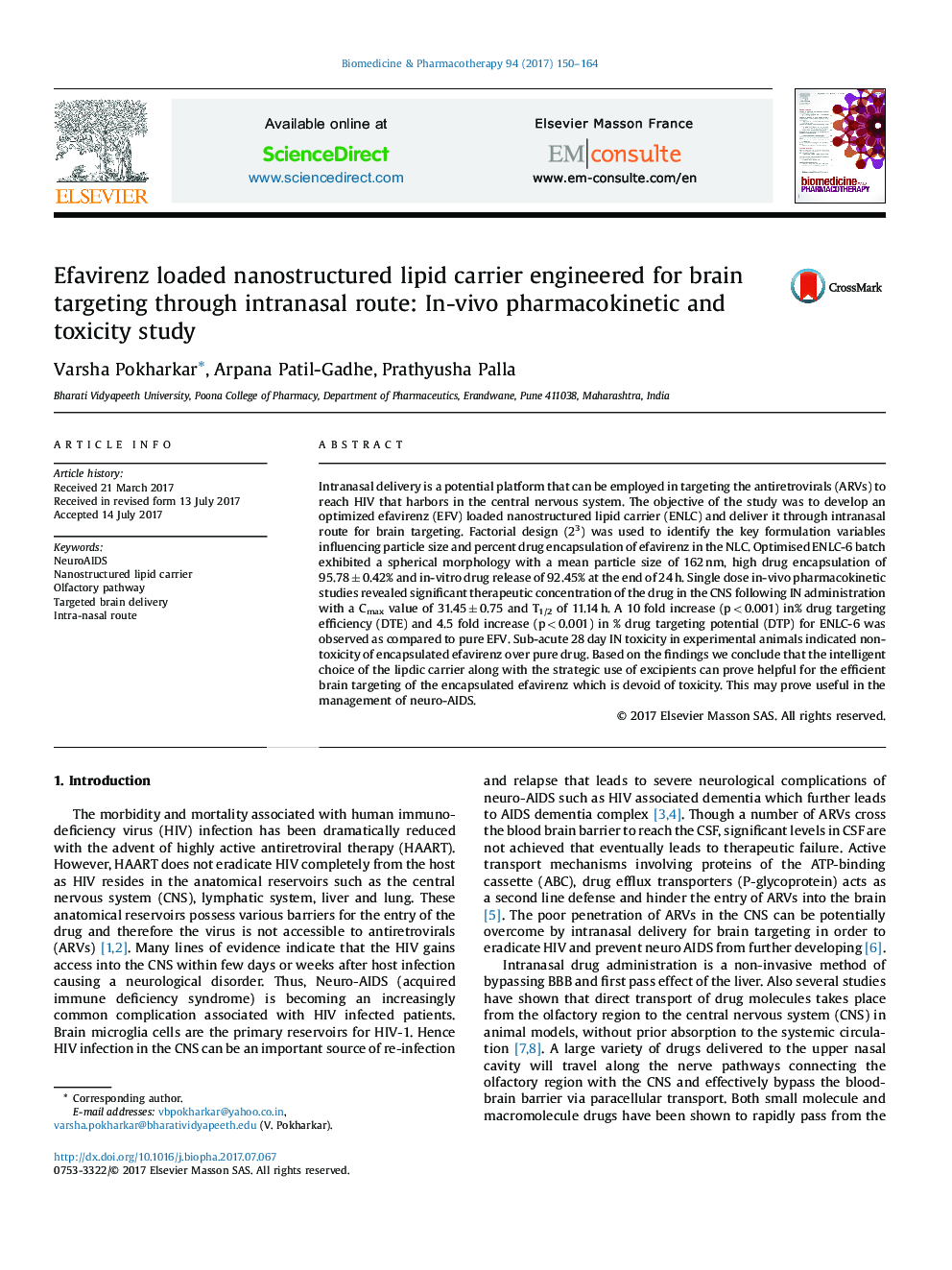| Article ID | Journal | Published Year | Pages | File Type |
|---|---|---|---|---|
| 5552826 | Biomedicine & Pharmacotherapy | 2017 | 15 Pages |
Intranasal delivery is a potential platform that can be employed in targeting the antiretrovirals (ARVs) to reach HIV that harbors in the central nervous system. The objective of the study was to develop an optimized efavirenz (EFV) loaded nanostructured lipid carrier (ENLC) and deliver it through intranasal route for brain targeting. Factorial design (23) was used to identify the key formulation variables influencing particle size and percent drug encapsulation of efavirenz in the NLC. Optimised ENLC-6 batch exhibited a spherical morphology with a mean particle size of 162 nm, high drug encapsulation of 95.78 ± 0.42% and in-vitro drug release of 92.45% at the end of 24 h. Single dose in-vivo pharmacokinetic studies revealed significant therapeutic concentration of the drug in the CNS following IN administration with a Cmax value of 31.45 ± 0.75 and T1/2 of 11.14 h. A 10 fold increase (p < 0.001) in% drug targeting efficiency (DTE) and 4.5 fold increase (p < 0.001) in % drug targeting potential (DTP) for ENLC-6 was observed as compared to pure EFV. Sub-acute 28 day IN toxicity in experimental animals indicated non-toxicity of encapsulated efavirenz over pure drug. Based on the findings we conclude that the intelligent choice of the lipdic carrier along with the strategic use of excipients can prove helpful for the efficient brain targeting of the encapsulated efavirenz which is devoid of toxicity. This may prove useful in the management of neuro-AIDS.
Graphical abstractDownload high-res image (207KB)Download full-size image
